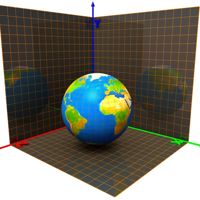Physicists 'breed' largest ever Schrödinger's cat – and it could help unlock the quantum world
The breakthrough tests the boundaries between the quantum and classical worlds

Physicists have created the largest experimental version of Schrödinger's cat – or the quantum superposition of two states – to date, and they believe the set-up could be used to test the limits of quantum mechanics.

Inside the weird world of quantum computers
ADVERTISEMENT
The famous thought experiment, proposed by Erwin Schrödinger in 1935, consists of a cat inside a box with a radioactive substance and a flask of poison. The radiation and poison could both kill the cat but we can't see inside. As a result, the cat is considered both dead and alive until the box is opened and its state can be seen.
This concept, known as superposition, is the backbone of quantum mechanics and the reason quantum computing can be so much more efficient than classical computing.
READ NEXT
Cosmic rays offer clue our universe could be a computer simulation 
Cosmic rays offer clue our universe could be a computer simulation
The idea is used to describe quantum mechanical states, which can be in a superposition of two states until their state is measured. For years, researchers have been creating an optical version of Schrödinger’s cat using interference between two light beams.
The two beams are coherent, which means a point in one wave always corresponds to the same point in the other wave, but in an opposite phase to each other. This means the fields of the electromagnetic waves point in opposite directions.
ADVERTISEMENT
Previously, experiments had only been able to achieve this superposition up to a certain amplitude. Now, researchers have managed to increase the amplitudes beyond the microscopic limit (WIRED has contacted the researchers to ask what limited the tests in the past and how their experiment varies.)
"One of the fundamental questions of physics is the boundary between the quantum and classical worlds,” said Alexander Lvovsky, professor at the University of Calgary and co-author of the paper.
“Can quantum phenomena, provided ideal conditions, be observed in macroscopic objects? Theory gives no answer to this question – maybe there is no such boundary. What we need is a tool that will probe it.”
ADVERTISEMENT
The original Schrödinger’s cat experiment
- In 1935, physicist Erwin Schrödinger proposed a thought experiment to demonstrate how we should think of quantum mechanics.
- The famous thought experiment consists of a cat inside a box, with a radioactive substance and a flask of poison.
- The idea is used to describe quantum mechanical states, which can be in a superposition of two states until their state is measured.
- The radiation and poison could both kill the cat, but we cannot see inside. This means the observer does not know whether the radioactive substance has decayed, or if the poison has been released.
- As a result, the cat is considered both dead and alive until the box is opened and the cat can be seen. This is the equivalent of a quantum mechanical particle, which can only be described in terms of a probability until it is measured.
- We only know the chances of certain results being seen when they are measured. When measured, this probability turns into one value – a phenomenon known as 'wavefunction collapse'.
The researchers from Calgary likened their study to ‘breeding’ Schrödinger’s cat states. "The idea of the experiment was proposed in 2003 by the group of Professor Timothy Ralph of the University of Queensland, Australia,” said co-author and University of Calgary graduate student Anastasia Pushkina.
“In essence, we cause interference of two "cats" on a beam splitter. This leads to an entangled state in the two output channels of that beam splitter. A special detector is placed in one of these channels. In the event this detector shows a certain result, a ‘cat’ is born in the second output whose energy is more than twice that of the initial one."
The group put this experiment into action in their lab, using two coherent light beams. The interference causes superposition, which can be 'bred' into a larger amplitude beam when it is split into two using a beam splitter. In the experiment, they converted a pair of squeezed 'cats' with amplitudes of 1.15 to a single positive 'cat' of amplitude 1.85. This generated several thousands of these kind of enlarged 'cats'.
ADVERTISEMENT
The next steps will be to try to increase the amplitude even further to see if there is any limit and if so, where the boundary between quantum and classical worlds lies.
"It is important that the procedure can be repeated: new 'cats' can, in turn, be overlapped on a beam splitter, producing one with even higher energy, and so on,” said Demid Sychev, lead author of the paper and a graduate student from the Russian Quantum Center and the Moscow State Pedagogical University.
“Thus, it is possible to push the boundaries of the quantum world step-by-step, and eventually to understand whether it has a limit.”
The work was published in Nature Photonics.
